|

On eBay Now...
Letter Signed Autograph Robert Of Saint-Jean (Journalist) Ca 1929 Julien Green For Sale
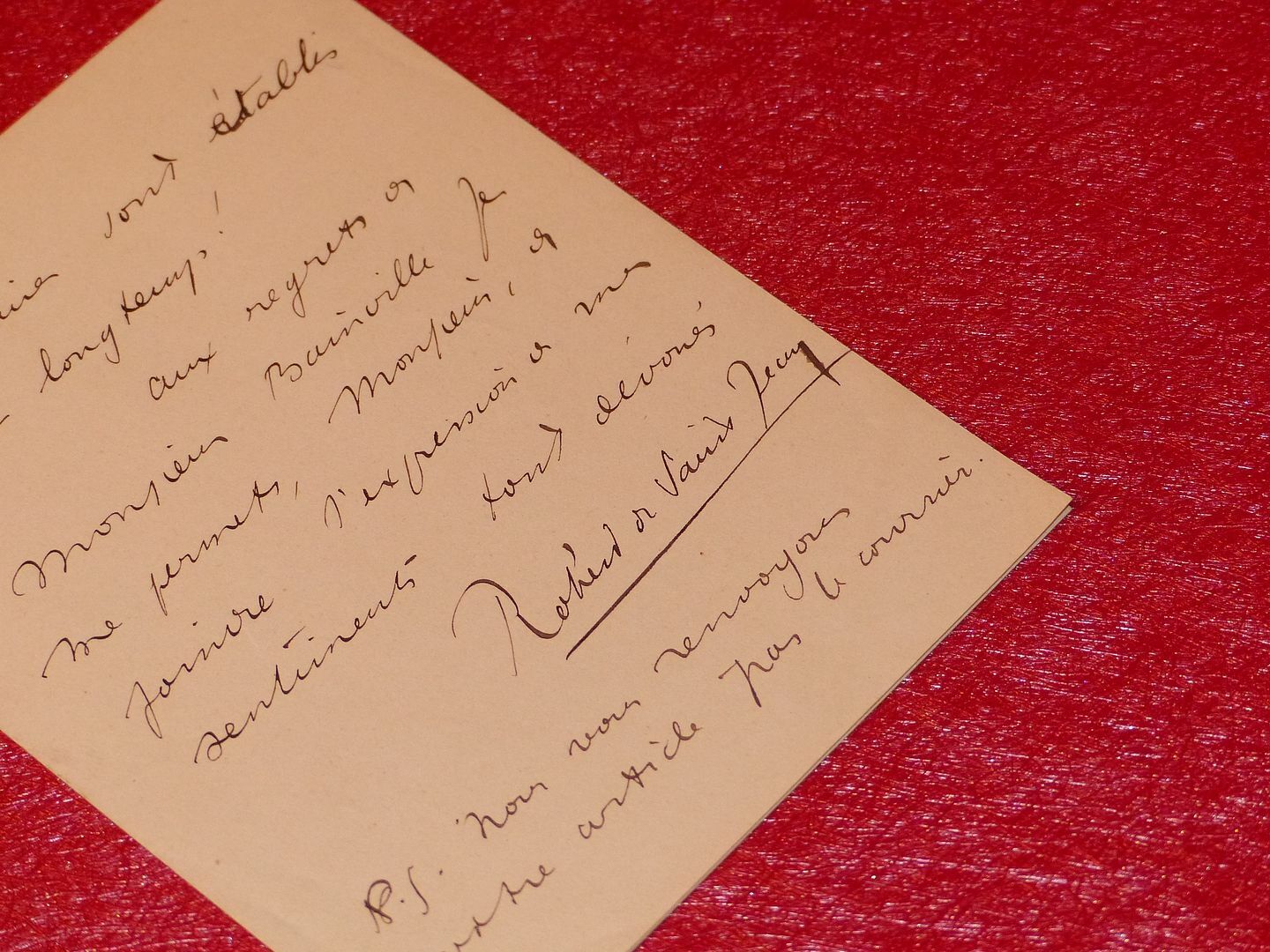
When you click on links to various merchants on this site and make a purchase, this can result in this site earning a commission. Affiliate programs and affiliations include, but are not limited to, the eBay Partner Network.

Letter Signed Autograph Robert Of Saint-Jean (Journalist) Ca 1929 Julien Green:
$112.66
[AUTOGRAPH LETTER - JOURNALIST & POLITICIAN FRENCH XIX/XXth - FRENCH ACTION]
-
letterhead of The Universal Review(we would rather expect a letterhead from the weekly review...but the two journals were closely linked, Robert de Saint-Jean was probably passing through...)
Signed
\"our director deeply regrets not being able to give you hospitality in the journal; but your pages have reached us at a time when our summaries are established for a long time...\"
Robert de SAINT-JEAN1901-1987
Robert of Saint John PresidentDiplomatic Press Association1958-1961 Journalist, writer
Robert de Saint Jean, born June 12, 19011 in Paris and died in the same city on January 16, 1987, is a French writer and journalist. He was the fellow of the writer French-speaking American Julian Green. Like the latter, he kept a diary which he published and which makes it possible to apprehend French cultural life over several decades. BiographySon of Raoul de Saint Jean and Charlotte, who asked for and obtained a divorce, brought up in a bourgeois environment in Paris, in particular by his paternal grandmother (Céline-Marie née Duhamel, second wife and widow of Brigadier General Robert de Saint Jean), he was a student at Collège Stanislas (Paris) until 1918. He then studied in the United Kingdom, in Cambridge where he had a room at King\'s College.
He was editorial secretary from 1924 and then editor-in-chief from January 1928 to April 1, 1935 of La Revue Semaine de François Le Grix, published by Plon. He is notably a literary columnist, of novels or essays; he directs the section “Literary life”. He was able to write rare political articles there. Thus in 1925 a rather severe article devoted to the weaknesses of the parties opposed to the Cartel des gauches, which classifies it on the right. He conducted with a colleague, Roger Giron, a remarkable investigation into the political convictions of young writers (Drieu la Rochelle, Montherlant, Jean Cassou, André Maurois, Cocteau, Henri Rambaud, Maurice Martin du Gard, Ramon Fernandez, etc.) in 1926 then interrogates alone, in the same way, industrialists and personalities linked to the business world.
It was at the home of Le Grix, a homosexual like himself, that he met the novelist Julien Green, Saturday, November 22, 1924. They were both invited to a tea party with other friends of the director of The Weekly Review. Their love is not only platonic, contrary to what Green claimed during his lifetime and as revealed by the latter\'s posthumous full journal (published in 2019). They live in real physical intimacy and form a free couple in the interwar period. Each multiplies the occasional partners that they sometimes share. They also shared an apartment in 1929-1930, with the novelist Anne Green, Julien\'s older sister. They will remain very close for sixty years, making many trips together (Germany, Austria, Italy, Tunisia, United States, Denmark, Sweden, etc., in the 1920s and 1930s). Tourist and cultural visits are often mixed with sexual adventures. He also travels without Julien Green, again meeting people. Green joined him in London from September to November 1936 then in January-February 1937. In Paris, during the inter-war period, he frequented places popular with homosexuals, such as the brasserie le Sélect, the Café Smith, the Club Liège or the Odessa baths. He meets boys there, sometimes prostitutes. He also frequents literary circles with his companion, notably André Gide, Jean Cocteau, André Malraux, François Mauriac, Henry de Montherlant and many other writers. He also rubs shoulders with painters (Salvador Dali, Christian Bérard or Pavel Tchelitchev) and social patrons (Marie-Laure de Noailles and her husband Charles de Noailles in particular).
In the 1930s, he was an adviser to the publisher Plon; he directs the “Things seen” collection, launched in April 1930 and interrupted in 1935. He is writing a play, which he has not managed to get performed. Gallimard, on the other hand, published his only novel in 1936, The Sacred Fire. It describes a JEUNE boy, René, who grows up with his mother and his grandmother, crushed by the memory of his older brother who died during the First World War and idealized by his mother, and who gradually loses his image of this brother, cumbersome and false. Julien Green gives a praising account of it in Le Figaro, without mentioning their relationship. In this same daily paper, Robert de Saint Jean had reviewed a work by Green the previous year because Le Grix had not wanted to publish his review in the Weekly Review.
He is mainly a journalist. His first book, published in 1934 and devoted to Roosevelt\'s United States, which he visited with Green, has previously appeared in the form of articles in various periodicals (Le Temps, Le Figaro, Paris-Midi, Marianne, Les Nouvelles littéraires, Vu, La Revue Semaine, etc.). They earned him the Strassburger Foundation prize. His travels with Green enabled him to meet political leaders, such as Chancellor Kurt Schuschnigg in Vienna in 1935 or Mussolini in Rome, and to write articles for the Revue Semaine, a provincial periodical or Parisian daily newspapers such as Le Petit Parisien, Le Figaro or Le Journal. He collaborated in the daily Paris-Soir of Jean Prouvost, from 1936. This newspaper offered him the post of correspondent in London in April 1936. He was special correspondent for this newspaper, in London from July 1936 to 1937, in Austria, Albania and Czechoslovakia in 1938, in Rome and London in 1939. He then published a few articles in other newspapers, such as Le Figaro. In June 1940, he was the deputy director of Prouvost, who was in charge of information and censorship by Paul Reynaud.
He then left France because he was on the German blacklist because of his articles, and joined the United States, thanks to Julien Green and his relations. He became assistant to Pierre Lazareff, former editor-in-chief of Paris-Soir, in the French section of the Office of War Information. He was also a correspondent for France-Afrique and then for Agence France-Presse in 1944.
He returned to France after the war, collaborated with France-Soir de Lazareff, from 1946 to 1948, with the weekly Carrefour - he signed an article from No. 4, in September 1944 and his articles became more numerous from 1946, until 1957 -, at the daily Le Parisienliberated - also owned by Émilien Amaury - then at Paris Match by Jean Prouvost, until 1968. He works in the direction of their foreign service. He chaired the Association of the French diplomatic press from 1958 to 1962. He was briefly literary director at Plon in 1960.
In 1984 he received the Marcel-Proust prize.
worksWith Roger Giron, Literary Youth in front of politics, 1928, Cahiers libre editions, 98 p. (survey previously published in The Weekly Review)The Real Revolution by Roosevelt, Grasset, 1934The Sacred Fire, Gallimard, 1936 (novel)Democracy, butter and guns: war diary of an average Frenchman, New York, Editions of the French House, 1941Julien Green by himself, Seuil, 1967Diary of a journalist, Grasset, 1974Minus five: diary of current times, Grasset, 1977Past not dead, Grasset, 1983, reed. 2012Julien Green, with Luc Estang, reissue 1990 The Universal Review Politics, RoyalistFounding date 1920Date of last issue 1944Publication director Jacques BainvilleChief Editor Henry Massis
La Revue universelle (Paris, 1920-1944) is a French periodical founded by Jacques Bainville (director) and Henri Massis (editor-in-chief), following the publication of the manifesto \"For a party of intelligence\" in Le Figaro on July 19, 1919. The magazine\'s program was: \"To bring together all that, in the world, takes sides against destruction, to strengthen and extend the relations between groups devoted to the cause of the spirit.\"
It was a nationalist review (royalist and Catholic) whose editorial line was close to that of L\'Action française, including Charles Benoist, Marie de Roux, Robert Havard de La Montagne, René Johannet, Georges Valois, Firmin Bacconnier, Pierre-Antoine Cousteau, Georges Gaudy, Gustave Thibon, Pierre Gaxotte, Claude Roy, Gonzague de Reynold, then after 1941, Pierre Boutang and Raoul Girardet. The Universal Review was particularly interested in foreign policy.
In addition to its two founders, the journal\'s main contributors were: Jacques Maritain, in charge of the philosophical section (early 1920s), Charles Maurras, Maurice Vaussard and Henri Gouhier.
The sections dedicated to art, literature and philosophy written by Léon Daudet, Thierry Maulnier, André Rousseaux and Robert Brasillach, have always been remarkable according to Eugen Weber, historian. The political articles reflect the politics of Action Française.
During the 1930s, the Revue universelle marked a certain support for authoritarian regimes and in particular for Salazar (in particular under the pen of Massis). On the other hand, from 1930, in the wake of Action Française, it led a permanent campaign against German rearmament, the revival of Germanism and the appearance of Nazism. It is one of the first important publications to have denounced from the outset the threats of Hitlerism and the unpreparedness of democracies in the face of an inevitable conflict with Germany.
After the death of Bainville (1936), she found herself in an increasingly narrow intellectual dependence with the French Action, and relays the campaigns of the royalist movement in favor of the preventive occupation of the Rhineland, the alliance with Fascist Italy and a continuous policy of rearmament. Strongly shaken by the French defeat, she moved to Vichy from 1940, supported Pétain, and opposed both the Resistance and collaborationism; it aligns itself with the positions of the Vichy regime.
The weekly review
Founder: Fernand LaudetFounding date 1892Date of last issue 1939Editor Plon, Nourrit & Cie Publication director François Le Grix The Weekly Review is a literary magazine founded in 1892 by Fernand Laudet and published until 1939.
HistoricalUntil the beginning of the 20th century, the review was directed by Pierre Mainguet, with Félix Jeantet as editor-in-chief. In 1908, it absorbs Le Monde moderne et la femme d\'Aujourd\'hui.
After having been its secretary in the 1910s, then its editor in November 1920, succeeding René Moulin, François Le Grix (1881-1966) became its director from October 1922 to 1939. The editors are Jean d\'Elbée (1882-1966) then Robert de Saint-Jean from 1928 to 1935, followed by Bernard Barbey. The Grix calls on new collaborators such as François Mauriac – who called it “La Grise” in the 1910s, because of his open homosexuality –, responsible for the theatrical section from 1921 to 1923, Edmond Jaloux (literary life), Wladimir d\'Ormesson (foreign policy), Louis Latzarus (Parisian life, then political chronicle from 1928), Gustave Fagniez and Frantz Funck-Brentano (history), Robert Vallery-Radot (religious life), Paul Reynaud (parliamentary tribune) . In 1929, the magazine founded the prize for the first novel.
The victory of the Cartel des gauches led the journal to take a stand in political debates and to gradually radicalize. The Grix, which wrote a political column from 1933, was a royalist time, in any case anti-parliamentary and hostile to democracy. He tried after the crisis of February 6, 1934 to set up a Liaison, Propaganda and Information Center, also called L\'Ordre français, with the deputy René Dommange, and with the support of Philippe Henriot and Xavier Vallat. . In 1934 and 1935, he traveled several times to Italy, where he met Benito Mussolini. The fascist dictator granted him financial aid of two million francs, which enabled him to buy the daily L\'Ami du peuple. The Grix supports Italy threatened with sanctions during the Second Italo-Ethiopian War; he thus co-signed the manifesto of French intellectuals for the defense of the West and peace in Europe (1935). But he remained Germanophobe until 1939 and declared himself disappointed with the rapprochement between Mussolini and Hitler.
-
1 sheet of white paper, folded in the center forming 4pp.,2 handwritten pages
(folded: about 14x11cm)
Paris, undated,around 1929 -
[From Georges or Louis Boulay]
-
Good condition
see visuals...
-
Very rare
As always, combined shipping costs in case of multiple purchases...
Saturday, November 22, 1924. They were both invited to a tea party with other friends of the director of The Weekly Review. Their love is not only platonic, contrary to what Green claimed during his lifetime and as revealed by the latter\'s posthumous full journal (published in 2019). They live in real physical intimacy and form a free couple in the interwar period. Each multiplies the occasional partners that they sometimes share. They also shared an apartment in 1929-1930, with the novelist Anne Green, Julien\'s older sister. They will remain very close for sixty years, making many trips together (Germany, Austria, Italy, Tunisia, United States, Denmark, Sweden, etc., in the 1920s and 1930s). Tourist and cultural visits are often mixed with sexual adventures. He also travels without JulienSaturday, November 22, 1924. They were both invited to a tea party with other friends of the director of The Weekly Review. Their love is not only platonic, contrary to what Green claimed during his lifetime and as revealed by the latter\'s posthumous full journal (published in 2019). They live in real physical intimacy and form a free couple in the interwar period. Each multiplies the occasional partners that they sometimes share. They also shared an apartment in 1929-1930, with the novelist Anne Green, Julien\'s older sister. They will remain very close for sixty years, making many trips together (Germany, Austria, Italy, Tunisia, United States, Denmark, Sweden, etc., in the 1920s and 1930s). Tourist and cultural visits are often mixed with sexual adventures. He also travels without Julien


AEROSMITH HAND SIGNED 8x10 PHOTO+COA LETTER SIGNED BY ALL 5 TYLER+PERRY $359.99
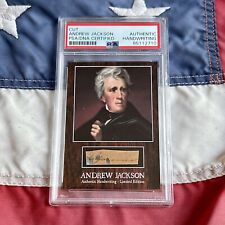
Andrew Jackson Handwritten Word Removed from an Autograph Letter Signed PSA $195.00
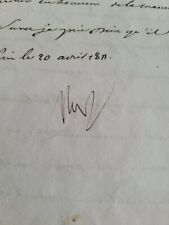
Napoleon Bonaparte 1811 Autographed Letter To The Duke de Feltre $5000.00

Alexander Hamilton Handwritten Word Removed From a PSA Autograph Signed Letter $250.00
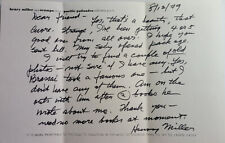
Henry Miller Autograph Letter Signed 5/12/79, mentioning BRASSAI $450.00
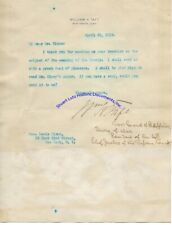
William Taft signed letter 1913 re Treaty just after end of Presidency $400.00
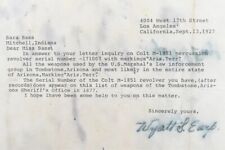
RARE Wyatt Earp Signed Letter Tombstone Colt Pistol reference Wild West Lawman $8750.00
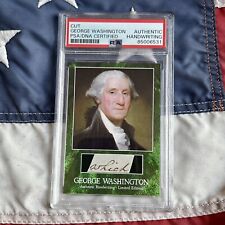
George Washington Handwritten Word Removed From an Autograph Letter Signed $650.00
|